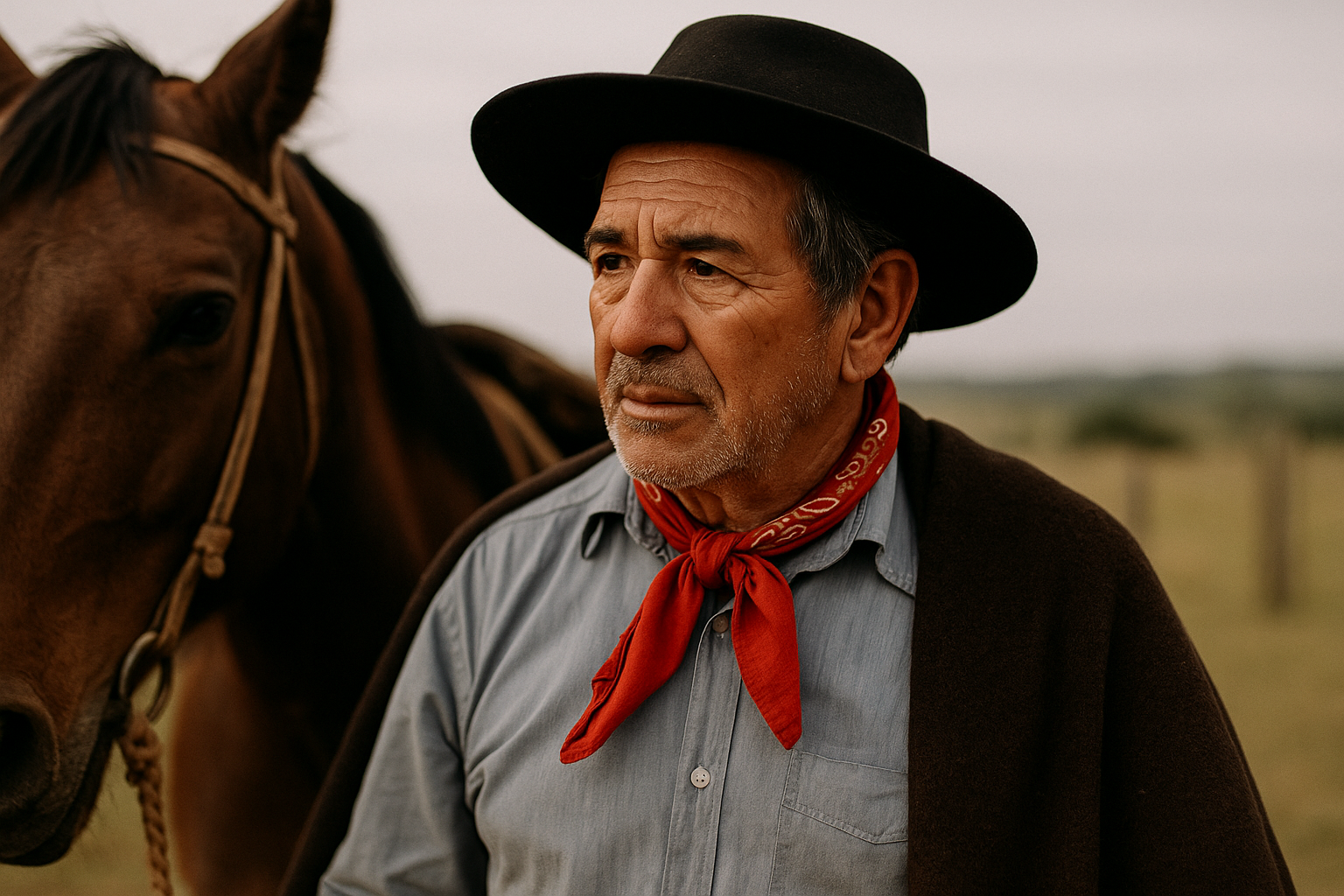In the pampas of Southern Brazil, herbs are more than simple plants. They are vessels of memory, carrying stories, rituals, and values from one generation to the next.
Each aromatic plant holds a place in Gaúcho tradition, not just for its fragrance or practical use, but for the cultural narratives that surround it.
Exploring these stories allows us to understand the deep relationship between people and the land. The most beloved Gaúcho herbs connect history, spirituality, and everyday life in powerful ways.
Marcela: The Herb of Easter Blessings
Marcela, known scientifically as Achyrocline satureioides, is one of the most iconic Gaúcho herbs. Its golden flowers are closely tied to Easter traditions.
Families rise early in the morning to harvest it, often before sunrise, believing that this timing enhances its protective power.
Bundles of marcela are taken to church to be blessed and later stored at home. Many Gaúcho households keep marcela not only as a soothing tea for colds and digestion but also as a sacred plant, a symbol of renewal and divine protection.
Rosemary: A Guardian of Homes
Rosemary, Rosmarinus officinalis, has long been considered a plant of clarity and protection.
Gaúcho families often place sprigs at the entrance of their homes to ward off negativity. The plant’s strong fragrance is believed to cleanse the environment and invite good energy.
Beyond symbolism, rosemary is tied to stories of mental strength. Grandmothers would brew rosemary teas to “clear the mind” of fatigue. Its connection to memory and focus made it an herb of both practical and spiritual significance.
Boldinho: The Healer of Stomachs
Boldinho, or Peumus boldus, holds a reputation as the digestive herb of Gaúcho tradition. Families often recount stories of long meals followed by boldinho tea, passed around the table to ease discomfort.
The plant’s slightly bitter taste became part of family memories. Children grew up hearing that boldinho was the cure for stomach troubles, a lesson often repeated after festive gatherings. Its story is one of everyday healing and care.
Mint: A Symbol of Freshness
Mint, Mentha spp., appears in countless Gaúcho tales of refreshment. Its cool, invigorating flavor became associated with summer relief during hot pampas days. Families often recall stories of mint sprigs crushed into water jugs or infused into mate for extra vitality.
Mint’s story is one of accessibility and abundance. It grows easily, spreading rapidly, which made it a reliable friend to households. Its cultural role reflects simplicity and generosity.
Lemon Balm: The Comforter of Nerves
Lemon balm, or Melissa officinalis, carries stories of comfort. Mothers and grandmothers brewed it when nerves were unsettled or sleep was difficult. Children often remember the gentle citrus aroma filling kitchens at night, a sign that calm was on its way.
Culturally, lemon balm is tied to tenderness. It represents care, reassurance, and family bonds. The herb’s story is less about ritual and more about quiet moments of domestic life.
Storytelling as a Form of Preservation
Herbs survived not just through use but through the stories told about them. Gaúcho families wove lessons into narratives: marcela blessed at Easter, rosemary guarding doors, boldinho curing stomachaches. These stories made knowledge memorable and engaging.
Storytelling ensured continuity. Even children who disliked bitter teas could not forget the stories tied to them. With each generation, tales reinforced the importance of herbs in cultural life.
Herbs in Festivals and Celebrations
Festivals and community gatherings provided platforms for herbal storytelling. Markets selling bundles of marcela before Easter became places where elders shared tales with younger generations. Folk songs and poems celebrated rosemary and mint, highlighting their role in Gaúcho identity.
These events kept stories alive beyond the home. They gave herbs a public stage, connecting plants to the larger narrative of Gaúcho culture.
The Spiritual Dimension of Herbs
Many stories about herbs include a spiritual element. Marcela, harvested at Easter, symbolizes blessings. Rosemary is said to repel negative forces. Lemon balm is described as a plant that restores inner peace.
This spiritual connection reinforces respect for the plants. Herbs are not seen as ordinary objects but as companions in life’s journey, deserving of gratitude and care.
Women as Keepers of Stories
Women, especially mothers and grandmothers, played a central role in transmitting these stories. They combined practical lessons with narratives, teaching children when to harvest and how to prepare herbs.
Their voices gave life to the plants, turning them into characters in family memory. This role of women as cultural keepers ensured that herbs remained part of daily conversation and practice.
Stories of Protection and Healing
Some stories describe herbs as guardians. A sprig of rosemary above the door was said to keep illnesses away. Bundles of marcela, blessed at Easter, protected families throughout the year.
Other tales highlight healing. Boldinho tea became the family cure, while mint provided relief from summer heat. These stories shaped trust in herbs and made them integral to household routines.
Urban Adaptations of Herbal Stories
As families moved to cities, stories adapted. Marcela is now sold in markets rather than collected from fields, but its connection to Easter blessings remains strong. Rosemary plants grow in urban balconies, continuing their role as guardians.
Even in apartments, parents tell their children the same stories. The setting may change, but the cultural narrative remains alive.
Modern Wellness and Traditional Stories
The global wellness movement has rediscovered many Gaúcho herbs. What science now promotes—mint for digestion, lemon balm for relaxation, rosemary for focus—matches the lessons of traditional stories.
This alignment has given new life to old narratives. Herbs are not only cultural symbols but also relevant contributors to modern well-being.
Challenges to Story Preservation
Despite their resilience, herbal stories face challenges. Industrial lifestyles and fast-paced living leave less room for oral traditions. Some younger generations may know the herbs but not the stories behind them.
Preservation efforts are needed. Schools, cultural associations, and festivals can help ensure that stories remain part of community memory.
Teaching Through Practice
The most effective way to pass on herbal stories is through practice. Preparing a cup of marcela tea becomes an opportunity to tell why it is harvested at Easter. Placing rosemary by the door invites a story about protection.
These everyday actions ensure that stories are not abstract but lived experiences. They integrate culture into ordinary routines.
The Role of Community Memory
Communities keep stories alive collectively. Markets, festivals, and local healers all contribute to the preservation of herbal narratives. Public storytelling reinforces private traditions, ensuring continuity at both personal and social levels.
When entire communities value herbs, their stories gain strength and permanence.
Global Resonance of Local Stories
Though deeply tied to Gaúcho identity, these herbal stories resonate globally. Many cultures share beliefs about rosemary’s protection, mint’s freshness, or lemon balm’s comfort. The Gaúcho versions add local color and historical depth to universal themes.
This resonance highlights the value of sharing stories across cultures. They enrich global understanding while preserving local identity.
Final Thoughts
The most beloved Gaúcho herbs are not only fragrant plants but storytellers. Through marcela, rosemary, boldinho, mint, and lemon balm, we see a tapestry of cultural memory woven across generations.
These stories give herbs their enduring power. They transform them from mere ingredients into symbols of protection, healing, and connection. By continuing to tell these tales, Gaúcho families honor their past while keeping traditions alive in the present.

Marcela Cardozo is passionate about Southern Brazilian traditions and the cultural stories carried through natural scents. She blends knowledge of native herbs, essential oils, and regional rituals to create practical and inspiring content. Her writing connects ancestral wisdom with modern living, offering readers simple ways to bring authenticity, well-being, and meaning into their everyday lives.
